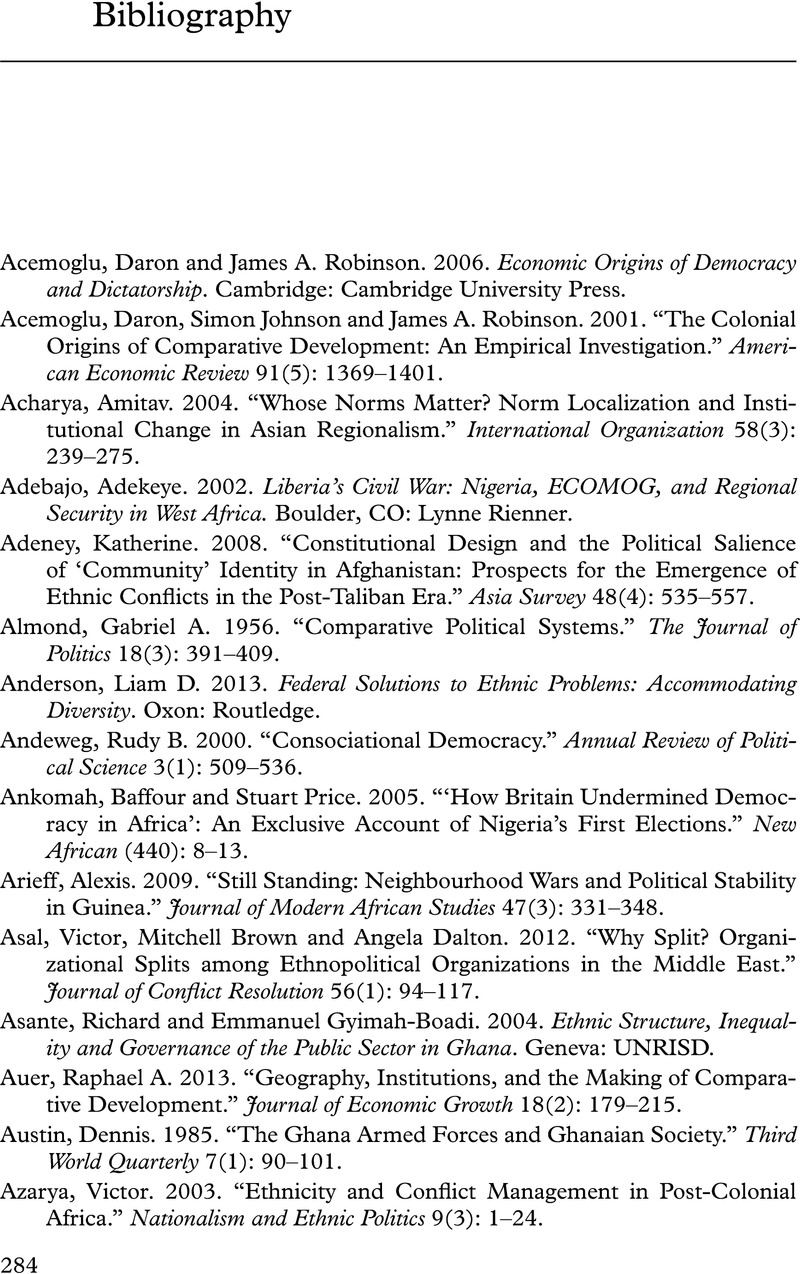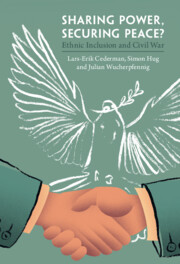Bibliography
Published online by Cambridge University Press: 23 June 2022
Summary

- Type
- Chapter
- Information
- Sharing Power, Securing Peace?Ethnic Inclusion and Civil War, pp. 284 - 311Publisher: Cambridge University PressPrint publication year: 2022



